Severe Air Turbulence- what’s known and what’s being done

TURBULENCE has appeared in multiple headlines over the past few months. The reporters have emphasized the risks of incurring this “invisible” meteorological phenomenon. That characterization is more “click bait” than accurate. That is not to say that turbulence poses risks and the below four presentations/
articles should clarify the state of aviation research and actions addressing this threat:
- A February 27-March 1, 2024, ICAO meeting on Turbulence which explains the science known about these atmospheric disturbances, the improvements in their forecasting, and exiting tools;
- A June 3, 2024, statement by the Director General of IATA, recognizing that this is not a new problem and explaining the association’s efforts to provide improved prediction applications;
- A February 24,2924, IATA announcement of the availability of Turbulence Aware, a system that provides reliable forecasting of areas of risk and that it is now supported by a sophisticated, global weather site;
- A April 14,2023 article explaining that NASA is developing a system of ground-mounted infrasonic microphones that can detect this turbulence.
Much needs to be done, but the current information is compelling and may be close to a proactive tool (NASA–Shams and Zuckerwar–Stratodynamics Inc. infrasound microphone)

+++++++++++++++
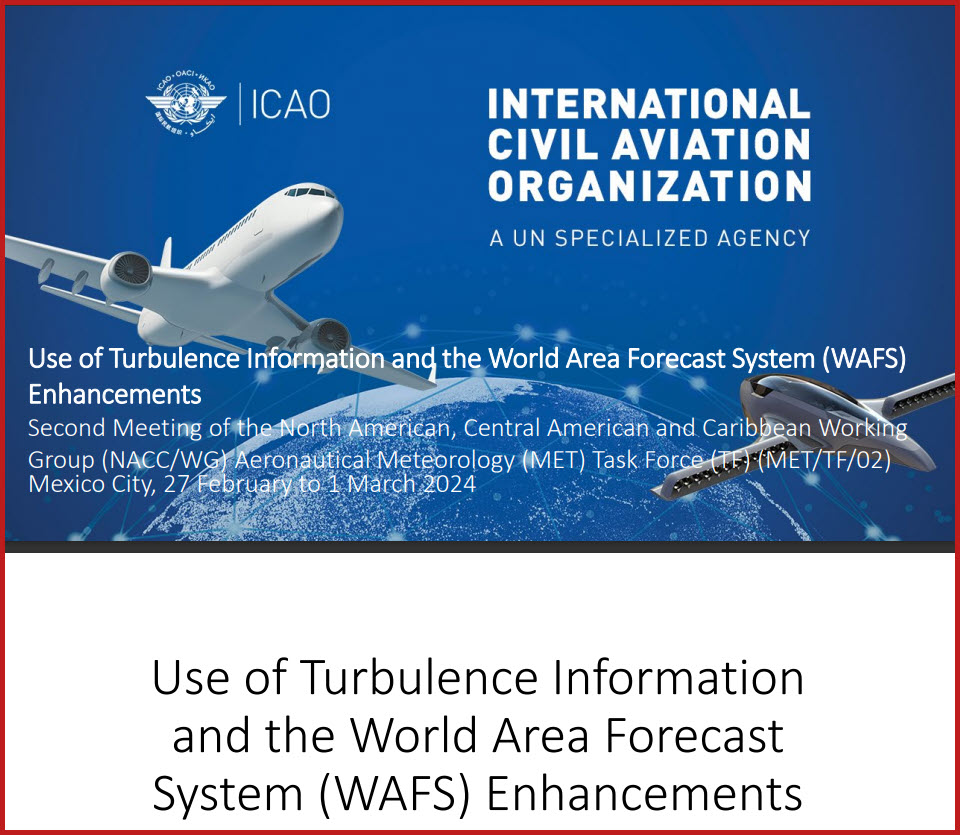
Second Meeting of the North American, Central American and Caribbean Working Group (NACC/WG)
AERONAUTICAL METEOROLOGY (MET) TASK FORCE (TF) (MET/TF/02)
MEXICO CITY, 27 FEBRUARY TO 1 MARCH 2024
Presented by
Karen Shelton-Mur, U.S. Federal Aviation Administration (FAA)
and
Larry Burch, AvMet Applications, Inc.
Turbulence Forecasts
• The U.S. National Weather Service (NWS) and ICAO’s WAFS turbulence forecasts are based on the U.S. National Science Foundation’s National Center for Atmospheric Research (NCAR) Graphical Turbulence Guidance (GTG) algorithm and forecast system
• GTG has evolved over the past 20+ years and was included in the WAFS forecasts in 2013
• During a 10-year period (2004-2013) 128.3 million EDR reports were recorded and used to improve the GTG forecasts
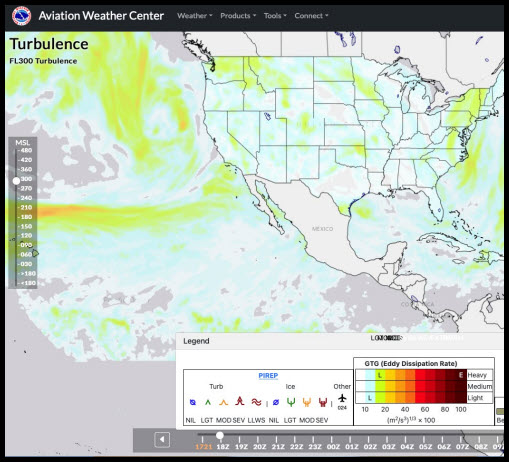
Eddy Dissipation Rate (EDR)
• The GTG is expressed in terms of EDR
• EDR is an aircraft-independent measure of turbulence. However, the relationship between the EDR value and the perception of turbulence is a function of aircraft type and the mass, altitude, configuration and airspeed of the aircraft.
• From Annex 3 (Appendix 4):
• Turbulence for medium-sized aircraft (e.g. B-737):
• Severe when the peak value of EDR equals or exceeds 0.45
• Moderate when the peak value of EDR is equal to or above 0.20 and below 0.45
• Light when the peak value of EDR is above 0.10 and below 0.20 • Nil when the peak value of EDR is below or equal to 0.10 GTG
Turbulence Forecasts
• Can be viewed on NWS Aviation Weather Center’s webpage
• https://aviationweather.gov/gfa/#turb
• The domain is the US and adjoining ocean waters. It does cover the Caribbean but is blanked out over Mexico, Central and parts of South America GTG Turbulence Forecasts
• EDR scale is shown for three aircraft weight classes
• Heavy = 136,000 kg or more • A380, B747, B777
• Medium = 7,000 to 136,000 kg • A320, B737
• Light = 7,000 kg or less • Cessna 320, LJ23 WAFS
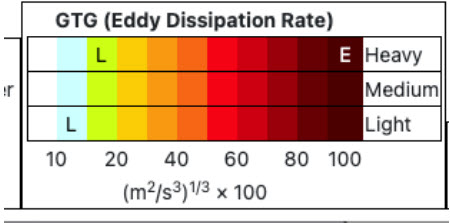
Forecasts
• WAFS grid point forecasts are used for flight planning
• The full suite of grid point forecasts is available through the WAFS Internet File Service (WIFS)
• A subset of the WAFS grid point forecasts can be viewed on the NWS Aviation Weather Center’s webpage
• https://aviationweather.gov/wafs/
• WAFS forecasts also include Significant Weather (SIGWX) charts Current WAFS Grid webpage
• Operated by NWS Aviation Weather Center and WAFC Washington
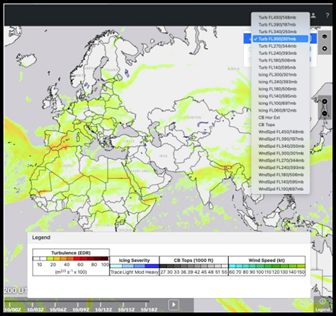
Current WAFS Grid webpage
• https://aviationweather.gov/wafs/
• Global display of:
• Upper-air winds
• Turbulence
• Icing
• Cumulonimbus (CB) cloud coverage and CB tops
• Pull down menu to select up to 3 products can be displayed
• Slider bar on the bottom to select valid times
• Webpage will be updated in late 2024 when new WAFS forecasts become operational WAFS
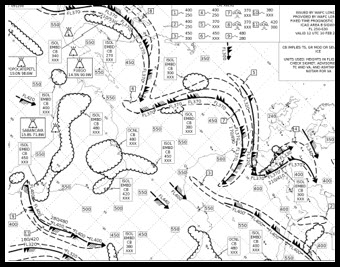
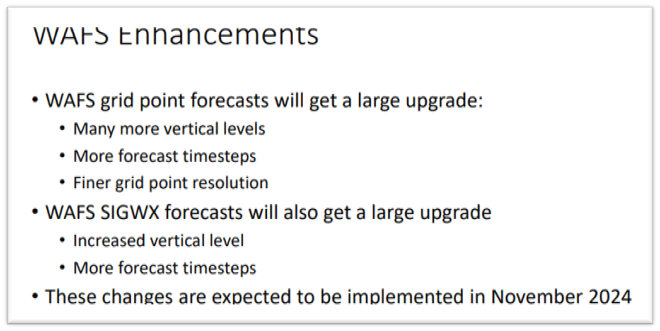

Grid Point Turbulence Forecasts
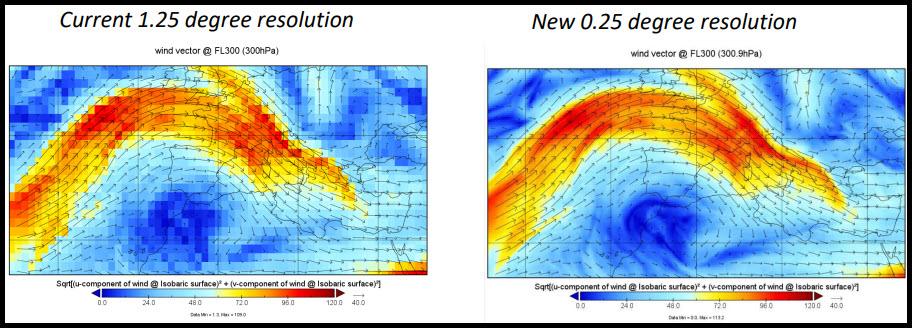
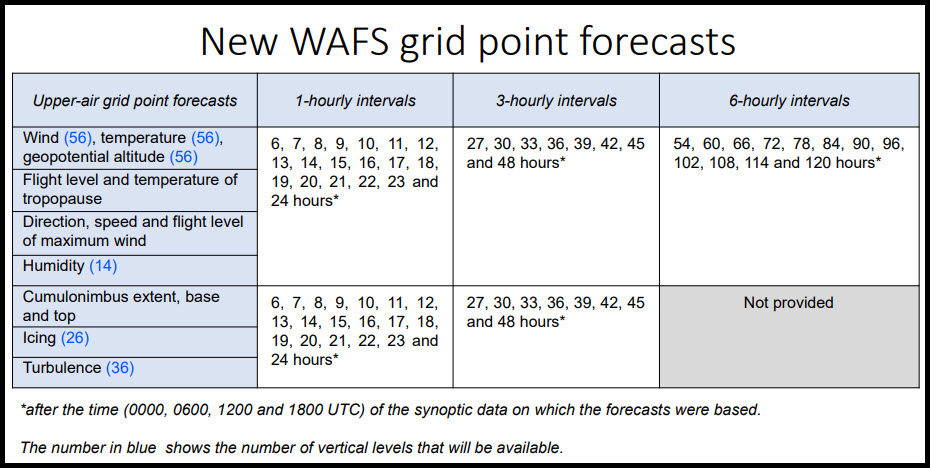

Enhanced WAFS SIGWX
• SIGWX forecasts will be produced for more than just a 24-hour forecast
• New SIGWX forecasts will be valid at 3-hourly periods from 6-hours to 48 • 6, 9, 12, 15, 18, 21, 24, 27, 30, 22, 36, 39, 42, 45 and 48-hours
• The new SIGWX forecasts will extend from FL100 to FL600
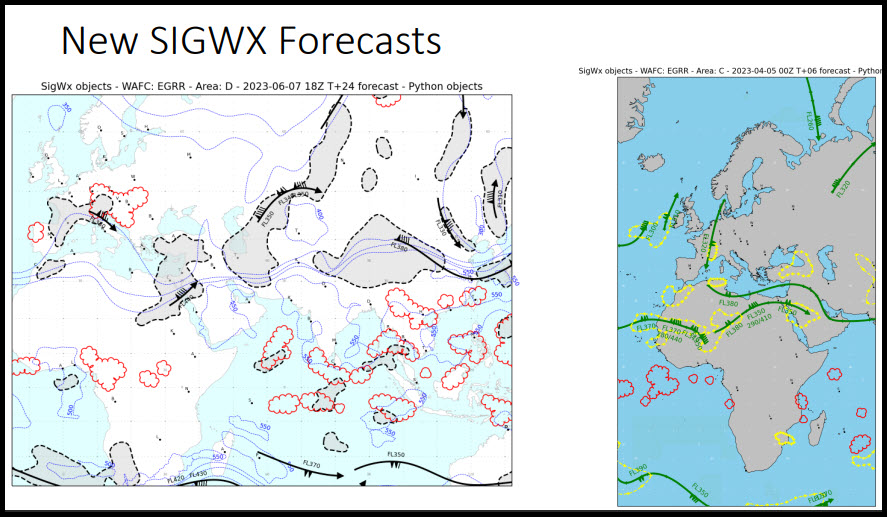
Other Turbulence Information
• IATA’s Turbulence Aware
• https://www.iata.org/en/services/statistics/safety-data/turbulence-platform/
• A global, industry-wide, data exchange platform, Turbulence Aware receives the existing airline data from ground servers, performs quality control, deidentifies data, and provides the data back to airlines via a ground-to[1]ground system-to-system connection.
• Integration with in-house or third-party flight planning or in-flight weather tools – To speed up decision-making
• The website indicates that there are 15 participating airlines
• A demonstration can be requested from IATA (refer to the website)
Other Turbulence Information
• IATA’s Annual Safety Report (2022)
•https://www.iata.org/contentassets/95e933e1ad794068812f073cf883cb08/r ecommendations-for-accident-prevention-in-aviation.pdf
• IATA’s Interactive Safety Report
• https://www.iata.org/en/publications/safety-report/interactive-safety-report
+++++++++++++++++++
High-profile turbulence injuries to be examined by global airline body in bid to boost flight safety
- International Air Transport Association head Willie Walsh pledges industry will continue to work to reduce risk of turbulence injuries
- Promise comes after incidents on Singapore Airlines and Qatar Airways flights leaves one dead and more than 100 injured
+ FOLLOW
Published: 11:23pm, 3 Jun 2024
A global airline association is to examine recent high-profile turbulence incidents to get a better grasp on the causes and help carriers boost safety, its head has said.
Willie Walsh, director general of the International Air Transport Association (IATA), told its annual meeting in Dubai on Monday that they would look into the safety risks and assess the situation after two airline turbulence incidents left one man dead and more than 100 injured.

“TURBULENCE IS NOT A NEW ISSUE,” Walsh said. “It has been a factor in the industry for many years.
“Obviously we’ll continue to assess the recent events to understand it better and see if there is anything else that can be done.
“But there is a LOT OF WORK GOING ON to ensure that we continue to move forward and enhance the safety of our operations … we never stand still and we never rest.
“We’re all the time working to continue to improve.”
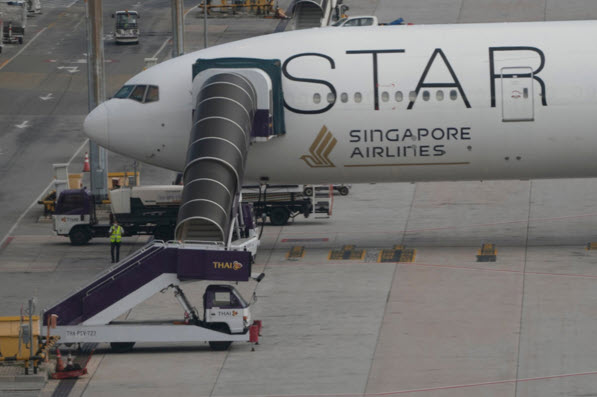
The Singapore Airlines plane hit by turbulence last month which left one man dead and more than 100 injured sits on the tarmac after it diverted to Thailand’s Suvarnabhumi airport in the wake of the incident. Photo: AP
The dangers of turbulence were underlined after last month’s high-profile incident on a Singapore Airlines flight, which left one man dead and injured more than 100 other passengers.
The airline said it was cooperating with authorities in an investigation into the incident.
A Qatar Airways flight over Turkey shortly afterwards also hit extreme turbulence en route to Dublin in Ireland, which left 12 passengers injured.
Walsh said IATA had a “Turbulence Aware” platform and that Dubai-based carrier Emirates at the end of last month became the latest airline to sign up.
“What Turbulence Aware does is it takes [information] from the aircraft in real-time, so if there is a turbulence event, it will record it,” he explained.
“It will then send details to other aircraft that are connected to the system to make them aware of the extent of the turbulence.”
…
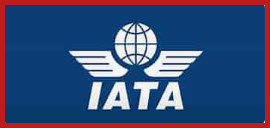
+++++++++++++++++++++
IATA & The Weather Company to Provide Enhanced Turbulence-Related Weather Data to Airlines

21 February 2024
Geneva – The INTERNATIONAL AIR TRANSPORT ASSOCIATION (IATA) is expanding the transmission of its Turbulence Aware data for use within industry-leading aviation solutions by The Weather Company, which serves a majority of North American commercial airlines and many others globally.

With this enhancement, participating airlines will soon be able to access EDDY DISSIPATION RATE (EDR) turbulence data directly through Fusion™ and Pilotbrief® tools by The Weather Company.
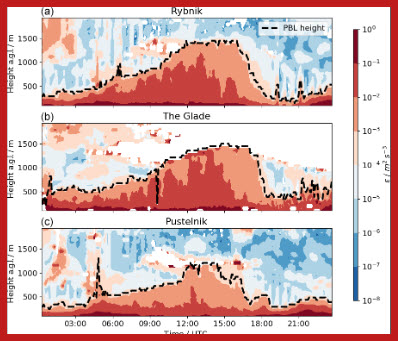
IATA Turbulence Aware will be enabled as an ADDITIONAL DATA LAYER within these tools, allowing pilots, dispatchers and flight planners to have needed turbulence observations integrated directly into their mission critical applications in one place rather than relying on multiple screens.
Turbulence can impact crew and passenger safety, route planning, arrival and departure times, customer satisfaction, equipment maintenance and more. Combining IATA Turbulence Aware observations with forecasts from The Weather Company, the world’s most accurate forecaster, aims to better mitigate the impacts of weather and turbulence for contributing airlines globally.
Accessing real-time, accurate turbulence information enables pilots and dispatchers to choose OPTIMAL FLIGHT PATHS, AVOID TURBULENCE and fly at optimum levels to maximize fuel efficiency and thereby reduce CO2 emissions. IATA Turbulence Aware was launched in 2018 to help airlines mitigate the impact of turbulence, which is a leading cause of passenger and crew injuries and higher fuel costs each year. The platform pools anonymized EDR turbulence data from thousands of flights operated by participating airlines. EDR is the official ICAO and WMO atmospheric turbulence intensity metric.
“As weather grows more impactful due to a changing climate, it’s critical now more than ever for aviation leaders to incorporate accurate, real-time, globally scaled weather data and insights within decisions,” said Ravi Vanmali, head of aviation for The Weather Company. “Reliable weather data and forecasts, combined with human expertise, can help airlines and pilots plan around inclement weather and turbulence, improve crew and passenger safety, and mitigate impact to the bottom line.”
“It is our aim to make access to turbulence-related data as simple as possible. By collaborating with The Weather Company, IATA Turbulence Aware data will be available to pilots and dispatchers through existing flight deck and flight planning applications and tools, enhancing the decision-making process in turbulence mitigation and avoidance”, said Frederic Leger, IATA’s Senior Vice President Commercial Products & Services.
Managing turbulence is expected to remain challenging, as climate change continues to impact weather patterns. This has implications for both safety and efficiency of flight. Turbulence Aware provides a significant improvement in turbulence reporting and avoiding excess fuel consumption.
At present, 21 airlines participate in the IATA Turbulence Aware Platform with more than 2,000 aircraft providing data daily. In 2023, a total of over 380 MILLION TURBULENCE OBSERVATIONS was generated. Thanks to the data provided by Turbulence Aware, over 700 million passengers* have enjoyed a safer and more comfortable travel experience.
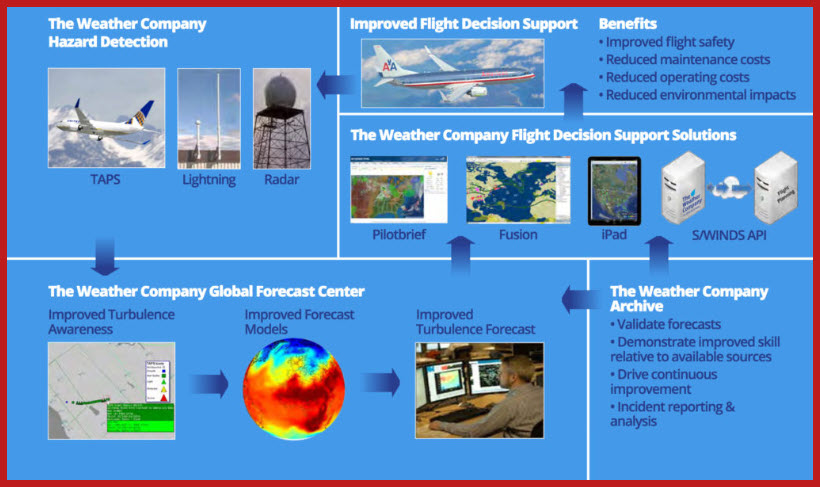
+++++++++++++++++
Early-Warning System Could Reduce Injuries from In-Flight Turbulence
APRIL 14, 2023
Ground-mounted microphones could pick up ultralow-frequency sound waves produced by clear-air turbulence, the leading cause of in-flight injuries and fatalities
BY DANIEL CUSICK & E&E NEWS
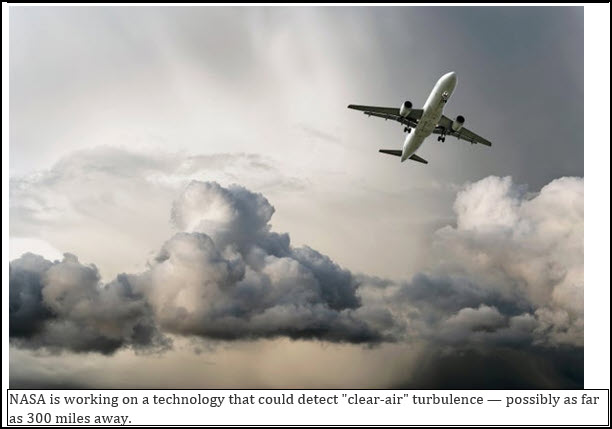
Aerospace
CLIMATEWIRE | Turbulence is more than just an annoyance for frequent fliers. It can cause severe injury to both passengers and crew, and research suggests that climate change will make it worse.
But NASA says it’s making progress on a solution that could help pilots ANTICIPATE AND AVOID SUDDEN SHIFTS IN AIR STABILITY.
The technology, under development at NASA’s Langley Research Center and involving government, university and private sector experts, ANTICIPATES USING GROUND-MOUNTED INFRASONIC MICROPHONES that can pick up ultralow frequencies produced by turbulence — possibly as far as 300 miles away.
If deployed at scale, such microphones could provide an early warning for what’s known as “clear-air turbulence,” the top cause of inflight injuries and fatalities, according to researchers at the University of Reading in the United Kingdom.
Clear-air turbulence differs from other forms of turbulence in several ways, and it can occur without warning at altitudes of 20,000 to 40,000 feet. The unstable air masses can be as much as 100 miles wide and 300 miles long, and they often are found just above the jet stream core, researchers say….
Scientists at the University of Reading project that the frequency of clear-air turbulence events will double by 2050 and that the intensity of such events will increase by as much as 40 percent.
“Our results confirm that the aviation sector should prepare for a more turbulent future,” noted the researchers in their paper, which was published last month in the journal Climate Dynamics.
The NASA research effort could make flight crews, passengers and aircraft more resilient to that future.